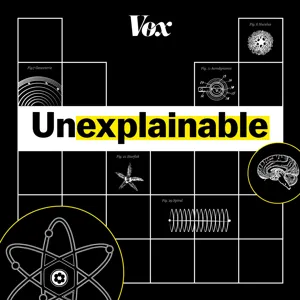Podcast Summary
The Early Days of Paleogenomics: Extracting DNA from the Dodo: Young scientist Beth Shapiro made history by extracting small fragments of mitochondrial DNA from a long-extinct bird, the dodo, using limited technology. Her perseverance led to groundbreaking discoveries and the eventual sequencing of the full mitochondrial genome of the dodo decades later with advanced technology.
The field of paleogenomics, or the study of ancient DNA, has come a long way since the early 2000s. Beth Shapiro, a young scientist at the time, made history by extracting DNA from a long-extinct bird, the dodo, which was believed to be a type of pigeon. However, the technology available to her limited her findings to small fragments of mitochondrial DNA. Despite the skepticism and challenges in the field, Shapiro persevered and opened her own lab at the University of California, Santa Cruz, where she went on to make groundbreaking discoveries, including writing books on cloning mammoths. It wasn't until over a decade later, with the advancement of next-generation sequencing technology, that the full mitochondrial genome of the dodo was sequenced and the results confirmed. This demonstrates the significant progress made in the field of paleogenomics and the importance of persistence and innovation in scientific research.
Unlocking ancient mysteries through DNA research: Ancient DNA research faces challenges due to natural DNA degradation but recent discoveries show that DNA fragments can be extracted from dirt and sediments, providing valuable insights into extinct species and ancient human history.
Ancient DNA research has made significant strides in the last 20 years, providing answers to intriguing questions about extinct species and ancient human history. However, studying ancient DNA is a challenging process due to the natural breakdown of DNA over time. This degradation is caused by various factors, including UV radiation, freezing and thawing, water molecules, and microbial activity. Despite these challenges, recent discoveries show that DNA fragments can be extracted from dirt and sediments, allowing scientists to map entire ecologies over time. For instance, a study was conducted on the last habitats of woolly mammoths, which lived on Wrangell Island in Siberia and Saint Paul Island in Alaska. By drilling a core sample from a volcanic caldera on Saint Paul Island, researchers were able to extract DNA and determine that mammoths went extinct there around 6,500-7,000 years ago. This research demonstrates the importance and potential of ancient DNA in understanding our planet's biosphere and human history.
Discovering the cause of mammoth extinction on Saint Paul Island through environmental DNA: Advancements in ancient DNA research, including next-generation sequencing technology, have enabled scientists to extract DNA from fossils up to 800,000 years old and uncover the cause of mammoth extinction on Saint Paul Island through environmental DNA analysis.
The extinction of mammoths on Saint Paul Island around 57,100 years ago was likely caused by a massive drought, as indicated by changes in the environment such as increasing saltiness, turbidity, and shallowness of the lake. This discovery was made possible through the analysis of environmental DNA and other paleoecological indicators. The field of ancient DNA research has seen significant technological advancements over the years, enabling the decoding of DNA from older and older fossils. For instance, researchers have successfully extracted DNA from a horse fossil that is about 800,000 years old, and there is evidence of environmental DNA that may be as old as the early Pleistocene or even the late Pliocene. However, it is important to note that the preservation of DNA decreases with age, and the possibility of extracting DNA from dinosaurs, which went extinct more than 65 million years ago, remains unlikely. The advent of next-generation sequencing technology has been a game-changer in ancient DNA research, allowing for the sequencing of all DNA fragments in a sample without the need for specific primers. This has significantly expanded the scope and potential of the field.
Revolutionizing Paleogenomics with Ancient DNA Technology: Ancient DNA technology allows us to explore deeper into the past, uncovering new insights about human evolution and our relationship with extinct hominids, challenging traditional views and raising philosophical questions.
The advancement in ancient DNA technology has revolutionized the field of paleogenomics, enabling scientists to explore deeper into the past with shorter DNA samples from older and harsher environments. This has led to new discoveries about human evolution and our relationship with extinct hominids like Neanderthals and Denisovans. The discovery of Neanderthal DNA in modern human genomes has shown that we share a significant ancestry with them, challenging the traditional understanding of our evolutionary history. This new knowledge also raises philosophical questions about what it means for a species to be extinct when a significant portion of their genetic material persists in another species. Excitingly, this research has the potential to answer fundamental questions about what makes us uniquely human and how our interbreeding with archaic humans has shaped our immune systems and other adaptations.
Ancient DNA research shedding new light on our past and future: Ancient DNA research reveals interactions with extinct species, raises questions about de-extinction, but not all DNA would be beneficial or functional in modern organisms
Ancient DNA research is shedding new light on our past and potentially our future. Humans interacted with extinct species, and while most of their DNA was beneficial or neutral, some parts were not compatible with human biology and were eliminated from our genome. This research not only rewrites history but also raises questions about the possibility of bringing extinct animals back through de-extinction. However, it's important to remember that not all of their DNA would be beneficial or functional in modern organisms. The conversation will continue with Beth Shapiro tomorrow, exploring the potential of de-extinction. This episode was produced by Thomas Lu, edited by Gabriel Spitzer, fact-checked by Anil Oza, and engineered by Jay Siz. It was produced at NPR by Rebecca Ramirez, Brendan Krump, Beth Donovan, and Anya Grundmann. I'm Aaron Scott, and thanks for listening to Shortwave from NPR. Support for NPR comes from The Bid, a podcast by BlackRock, where Larry Fink discusses challenges facing investors. Also from Capella University, where you can earn your degree online at your own pace and get support from people who care about your success. Imagine your future differently at capella.edu.





